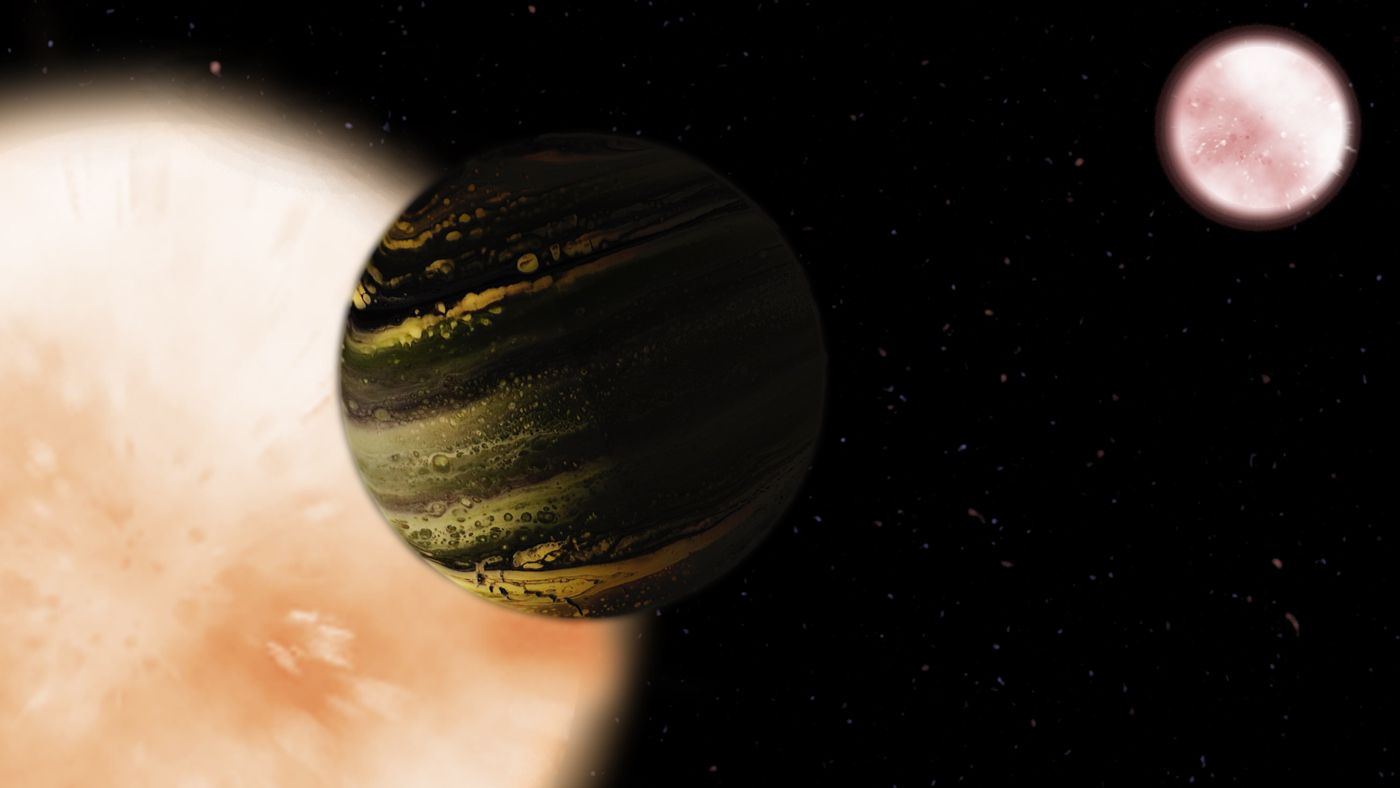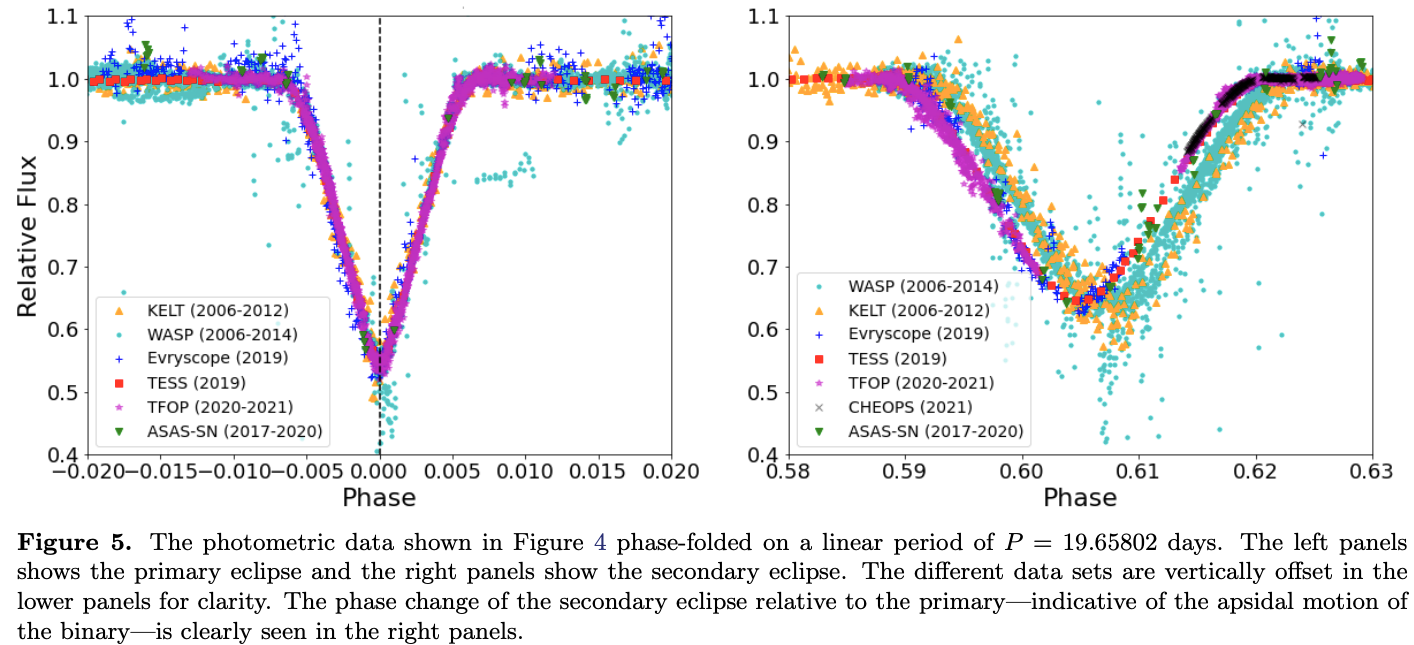27 days, 2 transits, 3 eclipses, 1st circumbinary planet detected from a single sector of TESS data

November 10, 2021, Mountain View, CA – Researchers announced that they detected a planet in a 200-days orbit around two stars – known as a circumbinary planet – from observations of just one TESS sector over an observation period of 27 days. In a paper published in the Astronomical Journal, the team, led by Veselin B. Kostov of the SETI Institute, demonstrated that it was possible to detect TIC 172900988b with a limited amount of data. They observed as it transited its primary star, then transited the secondary star five days later, with the binary eclipsing itself over a 20-day orbit. Previous detections of circumbinary planets required observing three transits which was not possible in the short observation window. Additionally, TIC 172900988b takes 200 days to complete a full orbit of its binary star system.
“The occurrence of multiple closely-spaced transits during one orbit is a unique observation signature of transiting circumbinary planets,” said Kostov. “This is a geometrical phenomenon that provides a new planet detection method. The discovery of TIC 172900988b is the first demonstration that the method works.”
TESS uses the transit method to detect exoplanets, meaning scientists observe the dimming of a star when a planet passes in front of its star. During its prime mission, TESS looked at 26 sectors (13 in the northern hemisphere and 13 in the southern hemisphere) for 27 days each to observe the entire sky. TESS measures the brightness of tens of millions of stars in an area of the sky 400X larger than Kepler, which only observed the Cygnus and Lyra constellations, but for a substantially shorter time.
Circumbinary planet detections have been relatively rare – Kepler discovered only about a dozen transiting circumbinary planets. And this is the first time a science team was able to use such a limited amount of data to calculate a complex orbital pattern. TIC 172900988b is also quite large – it’s a Jupiter-sized gas giant (Jupiter is about 10X wider than Earth) and is the most massive transiting circumbinary planet to date. So far, TESS has discovered 150 confirmed exoplanets, with more than 4,500 candidates still to be analyzed.

“Detecting circumbinary planets is much more complicated than detecting planets orbiting single stars,” said Nader Haghighipour, Planetary Science Institute team member. “Our group was able to show that despite its short window of observation, it is still possible to use TESS to detect circumbinary planets.”
In January of this year, an international team of researchers led by Brian P. Powell at NASA's Goddard Space Flight Center and Veselin B. Kostov at the SETI Institute identified a unique system consisting of six stars. The three binary stars form a gravitationally bound system, and each pair produces eclipses. The star system, known as TYC 7037-89-1, was uncovered in data from the TESS data with a neural network designed to detect eclipsing binary stars. That complex star system is in the Eridanus constellation, ~1,900 light-years away from Earth.
TESS’s prime mission ended on July 4, 2020, and it is now in an extended mission. TESS continues to find planets ranging from small, rocky worlds to giant planets, showcasing the diversity of planets in the galaxy.
Brian Powell, Data Scientist in NASA’s High Energy Astrophysics Science Archive Research Center (HEASARC), built the neural network the team used to find eclipsing binaries in the TESS lightcurves. Also on the team were Billy Quarles, Valdosta State University, Department of Physics, Astronomy, Geosciences and Engineering Technology and Jerry Orosz, San Diego State University.
DOI: 10.3847/1538-3881/ac223a
Funding information:
NASA TESS GI grants 80NSSC20K0054 and 80NSSC20K0850, NASA XRP grant 80NSSC18K051, NASA Hubble Fellowship grant NSF grant HF2-51464, AST-1617004, NASA' High-End Computing Program through the NASA Center for Climate Simulation at Goddard Space Flight Center, John Hood Jr., Eberly Research Fellowship, University of Texas Center for Planetary Systems Habitability grant #0035
About the SETI Institute
Founded in 1984, the SETI Institute is a non-profit, multidisciplinary research and education organization whose mission is to lead humanity's quest to understand the origins and prevalence of life and intelligence in the Universe and share that knowledge with the world. Our research encompasses the physical and biological sciences and leverages expertise in data analytics, machine learning and advanced signal detection technologies. The SETI Institute is a distinguished research partner for industry, academia and government agencies, including NASA and NSF.
Contact Information:
Rebecca McDonald
Director of Communications
SETI Institute
rmcdonald@SETI.org
Download Press Release here.





